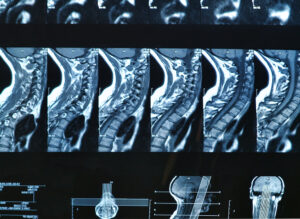Magnetic resonance imaging (MRI) is a powerful medical imaging tool that provides highly detailed pictures of the body’s internal structures. It uses a large magnet and radio waves to form detailed images of organs, bones, muscles, and blood vessels, but no radiation is produced during the scan. An MRI exam gives your physician important information necessary to accurately diagnose a medical condition and choose an appropriate treatment plan. This non-invasive procedure is essential for effectively diagnosing and treating many different medical conditions.
How MRIs work
MRI uses powerful magnets to create a strong magnetic field that forces the protons in the body to align with it. When a radiofrequency pulse is then administered, the protons are stimulated and are forced out of equilibrium, working against the pull of the magnetic field. As soon as the pulse stops, MRI sensors can detect the energy released by these protons as they realign with the magnetic field. The rate at which this occurs and the amount of energy that is released depends on various factors such as environmental conditions and chemical characteristics of molecules in the area. This varying reaction allows physicians to determine tissue types based on their unique magnetic properties.
The patient must be placed in a large magnet so that the protons within their body can realign with the magnetic field. This process is easier to accomplish if the patient remains still, as any movement can distort the image. In some cases, contrast agents containing Gadolinium may be administered intravenously to accelerate proton realignment. Thus, the speed at which protons are able to rebalance themselves has a direct bearing on the brightness of the obtained image.
How to Prepare for MRI?
Preparing for your MRI starts with understanding the protocol and preparation needed to ensure a safe and successful exam. It is important to remember that the patient may eat, drink, and take medications as usual before the MRI exam; however, if it is a specialty MRI service, there may be specific restrictions. When it comes to clothing, the patient must change into a patient gown that will be provided for the duration of the visit.
The patient is also encouraged to remove any piercings and jewelry and to leave all valuables at home. During the imaging process, the patient will lie inside an open-ended tube-like structure, which makes it necessary to remain completely still. Ear plugs will also be provided as protection from the loud noise from the machine.
Special Precautions
While MRI does not emit any ionizing radiation, it does require a strong magnetic field. This magnetic field is powerful enough to exert forces on objects that contain iron, steel, or some other magnetizable material and can potentially cause items such as wheelchairs or implants to move or even be thrown clear across a room. It is for this reason that physicians strongly advise patients to inform them of any medical device or implant before undergoing an MR scan.
Implants
The powerful magnetic field created during MRI scans can interfere with the functioning of the implanted device and cause potentially serious damage. Pacemakers, cochlear implants, vagus nerve stimulators, loop recorders, implantable cardioverter-defibrillators, insulin pumps, deep brain stimulators, and capsules from capsule endoscopy can all be affected by entering an MRI machine and should be avoided at all costs.
Pregnancy
Expectant mothers who require an MRI should be aware of the potential risks, though no effects have been established. It is especially important to avoid MRI scans in the first trimester when most of the fetus’ organs are being formed.
Renal Failure and Contrast Agents
Patients with severe renal failure who require dialysis are particularly at risk of nephrogenic systemic fibrosis (NSF)—a rare but serious illness associated with gadolinium-containing agents such as gadodiamide. While no causal link has been definitively proven, the risk of NSF is serious enough for current guidelines in the United States to recommend that dialysis patients only receive such agents when absolutely necessary and take steps to remove them from their bodies promptly by undergoing dialysis shortly after their scans.
Claustrophobia
Patients who experience even mild feelings of claustrophobia can find long scan times inside an MRI very distressing. Familiarizing patients with the MRI machine and process, as well as employing visualization and relaxation techniques, administering appropriate sedation or anesthetic drugs, and providing access to additional support personnel, all have the potential to alleviate some of these anxieties.
Final Thoughts
The MRI diagnostic test is a crucial diagnostic test that may be necessary when evaluating certain injuries or conditions. The team at N8 Family Chiropractic is diligent in finding the underlying causes of health conditions and uses a variety of diagnostic options to come up with the correct diagnosis.
If you would like to make an appointment, simply contact one of our locations that are closest to you.
References:
https://www.hopkinsmedicine.org/
https://stanfordhealthcare.org/






